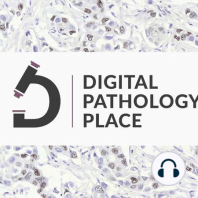2 min listen

QuPath - open source quantitative pathology not only for pathologists w/ Pete Bankhead, University of Edinburgh
QuPath - open source quantitative pathology not only for pathologists w/ Pete Bankhead, University of Edinburgh
ratings:
Length:
56 minutes
Released:
Sep 24, 2021
Format:
Podcast episode
Description
With more than 170K total downloads and over 700 citations in scientific literature, QuPath is arguably the most popular open-source software for quantitative pathology and bioimage analysis. Today’s podcast guest, Pete Bankhead, the author of QuPath, is taking us behind the scenes of his software creation.Even though Pete is now a senior lecturer in digital pathology at the University of Edinburgh, his digital pathology career actually started by accident. With an undergraduate degree in theology and a master’s in computer science, he started working on bioimage analysis during his PhD in biomedical sciences. He began using open-source software for image analysis, which was an excellent and very efficient way to work with static bioimages. So, during his post doc work he tried to apply open-source software to pathology whole slide images (WSI), unfortunately without success…The pathology WSI were just too big - it was not even possible to efficiently open them with any openly available software. So he started his own software development – first by creating his own plugins for already available open-source programs, such as ImageJ. It sort of worked but not really… There was no way to coordinate the development and bring all his plugins together, so he started developing his own pathology WSI viewer. That worked, and in the process, he realized that building software tools himself gave him a lot more freedom to solve problems in a way tailored to the specific challenges of digital pathology. He dove deeper into the project and created what we now know as QuPath – the open-source software for digital pathology image analysis. During its development, the software evolved from a Ki67 quantification tool to a machine learning-powered, versatile image analysis software.Listen to the full episode to learn Who and what influenced Pete, why is QuPath open-source,why Pete fought for QuPath to stay open-source, and what are the most important features of QuPath. This episode’s resources:The real background story to QuPath on TwitterDigitizing a photo album with QuPathQuPath docs QuPath annotation tweetorial QuPath YouTube channel QuPath user forum (also for other software) QuPath immunofluorescence multiplex support StarDist cell detection algorithm (deep learning-based) QuPath 2020 workshop “From Samples to Knowledge”Cite this paper if you are using QuPath for researchMost popular free open-source software programs for image analysis of pathology slides HistoQC, an openGet your "Digital Pathology Beginners Guide" E-book for free! Sign up for the waiting list here.
Released:
Sep 24, 2021
Format:
Podcast episode
Titles in the series (89)
Welcome to the Digital Pathology Podcast! by Digital Pathology Podcast